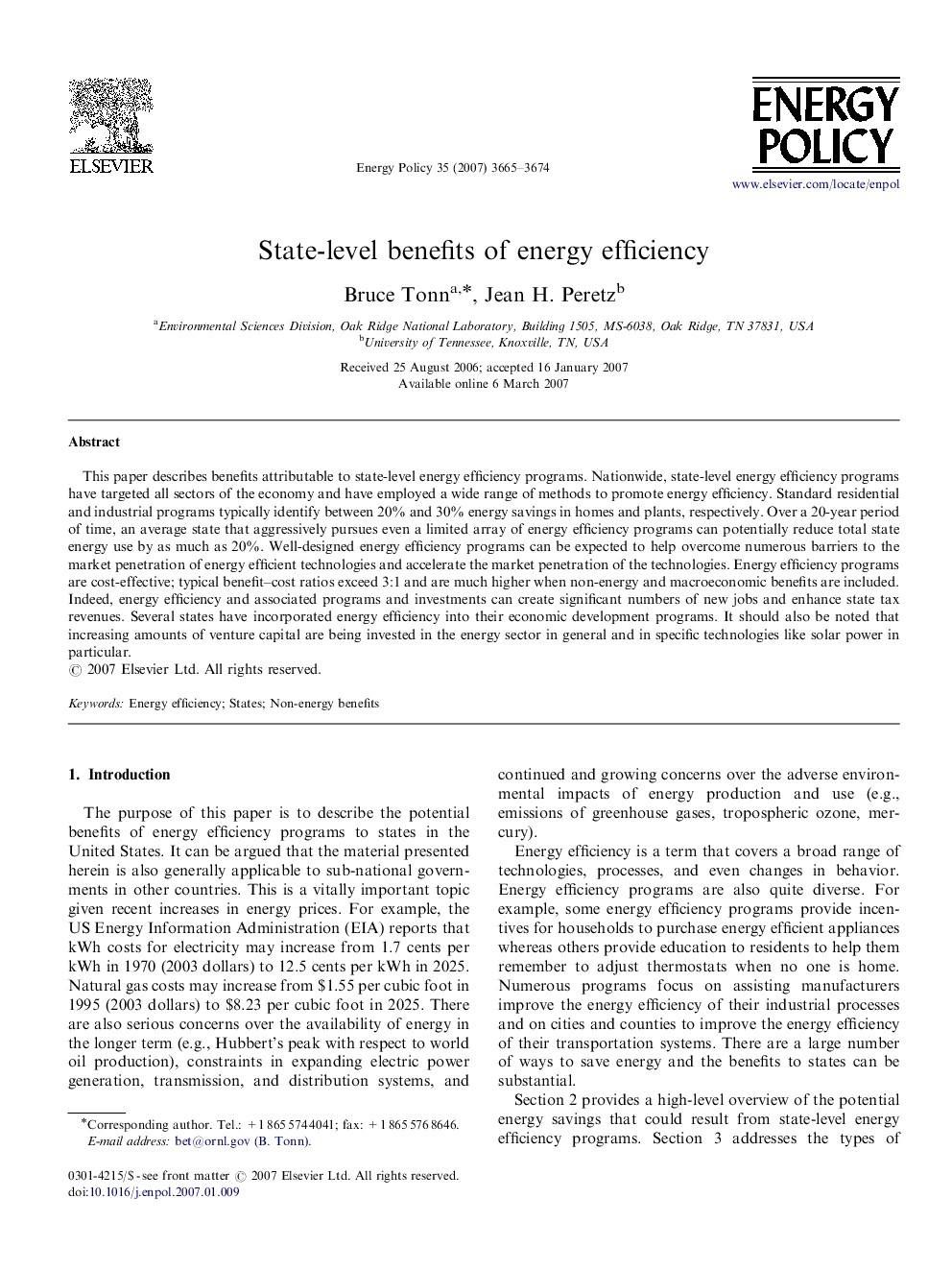| Article ID | Journal | Published Year | Pages | File Type |
|---|---|---|---|---|
| 994294 | Energy Policy | 2007 | 10 Pages |
This paper describes benefits attributable to state-level energy efficiency programs. Nationwide, state-level energy efficiency programs have targeted all sectors of the economy and have employed a wide range of methods to promote energy efficiency. Standard residential and industrial programs typically identify between 20% and 30% energy savings in homes and plants, respectively. Over a 20-year period of time, an average state that aggressively pursues even a limited array of energy efficiency programs can potentially reduce total state energy use by as much as 20%. Well-designed energy efficiency programs can be expected to help overcome numerous barriers to the market penetration of energy efficient technologies and accelerate the market penetration of the technologies. Energy efficiency programs are cost-effective; typical benefit–cost ratios exceed 3:1 and are much higher when non-energy and macroeconomic benefits are included. Indeed, energy efficiency and associated programs and investments can create significant numbers of new jobs and enhance state tax revenues. Several states have incorporated energy efficiency into their economic development programs. It should also be noted that increasing amounts of venture capital are being invested in the energy sector in general and in specific technologies like solar power in particular.
